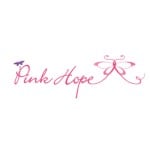

In an office full of women, we talk all day about the issues that affect us. Relationships, parenting, the result of the recent election, periods – they’re all regular topics spoken about over the watercooler.
But there is one thing we don’t tend to chat about until it’s far too late: cancer. Especially those that specifically affect women.
At current rates, it is expected that one in two Australian men and one in three Australian women will be diagnosed with cancer in their lifetime.
If we develop a system where we have regular breast, ovarian and bowel cancer screenings, which should happen on an annual or biannual basis depending on your age, then we can go a long way in preventing many cancer-related deaths.
Research shows that regular breast screenings prevent breast-cancer related deaths by 20 per cent, and regular bowel screenings prevent death by 50 per cent. This is hugely significant when we acknowledge that one in five people who died from breast cancer, and half of all people who died from bowel cancer, could have been with us longer.
To help everyone keep on top of it all, we’ve put together a checklist to empower you to know what cancer checks you should be doing and how often you need to do them.




Top Comments
And skin cancer! Especially in Austrailia.
The CA125 is not a diagnostic test. It is raised in many different benign conditions as well as ovarian cancer. It is a monitoring test. If an ovarian cyst has already been found on ultrasound, it may be ordered to determine the risk that the cyst is a cancer, but it would never be used on it's own.
Please don't tell women that there is a blood test to detect ovarian cancer, because there isn't.